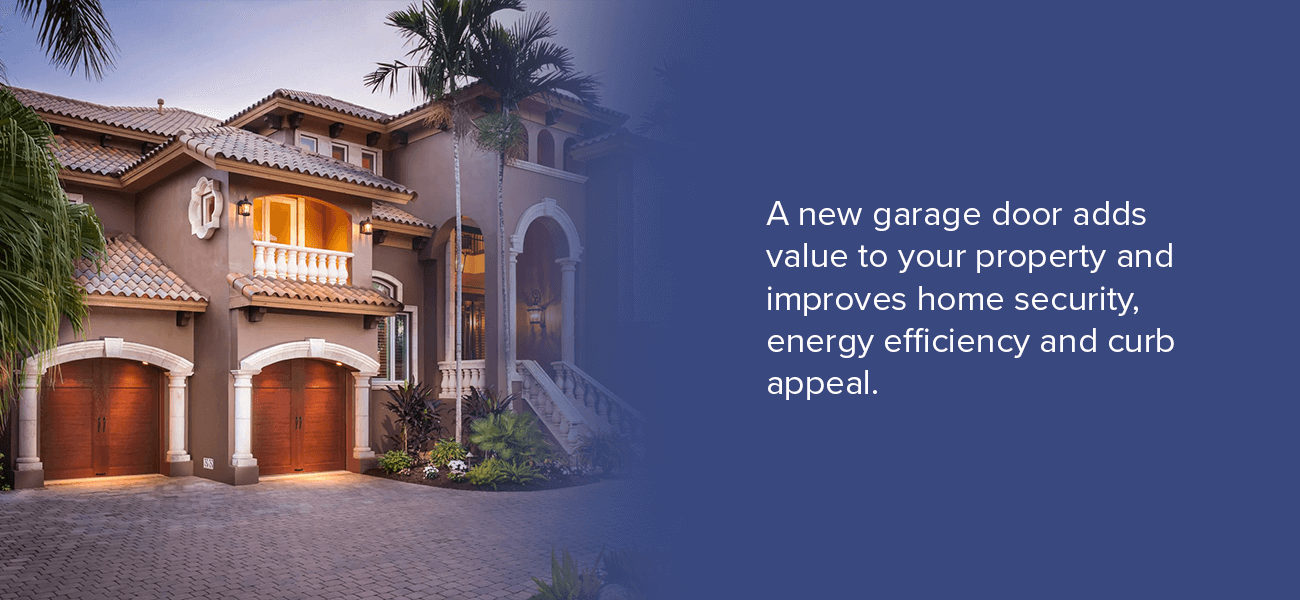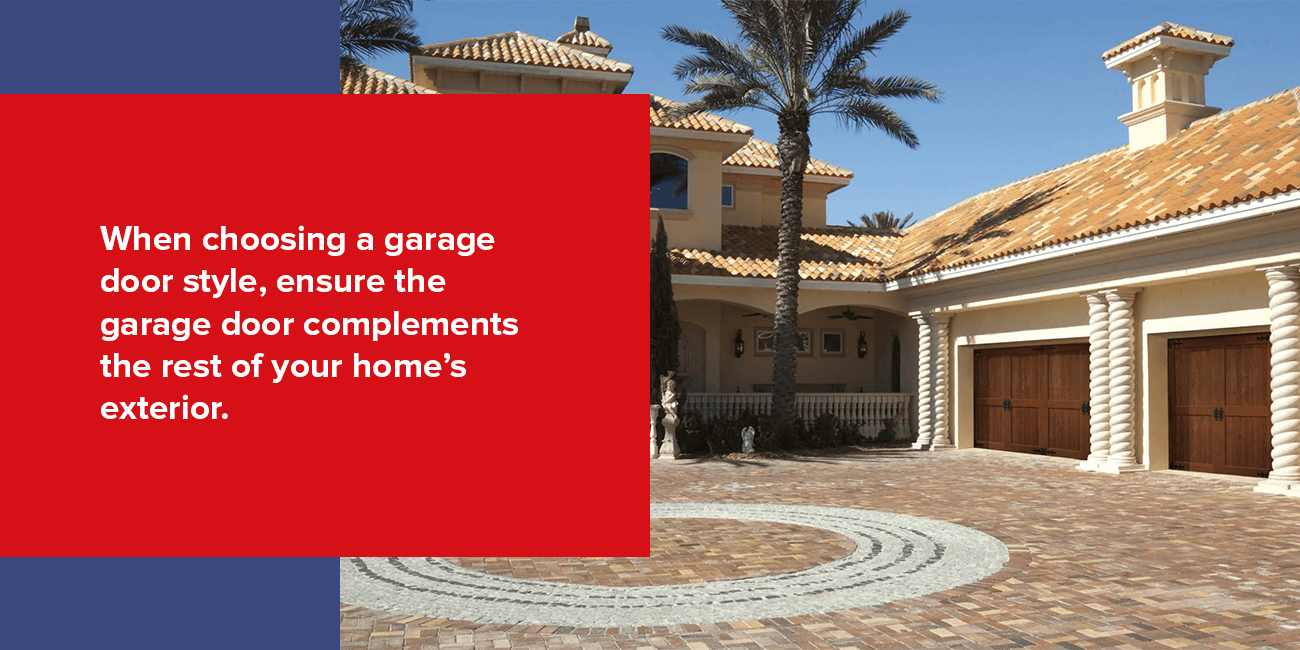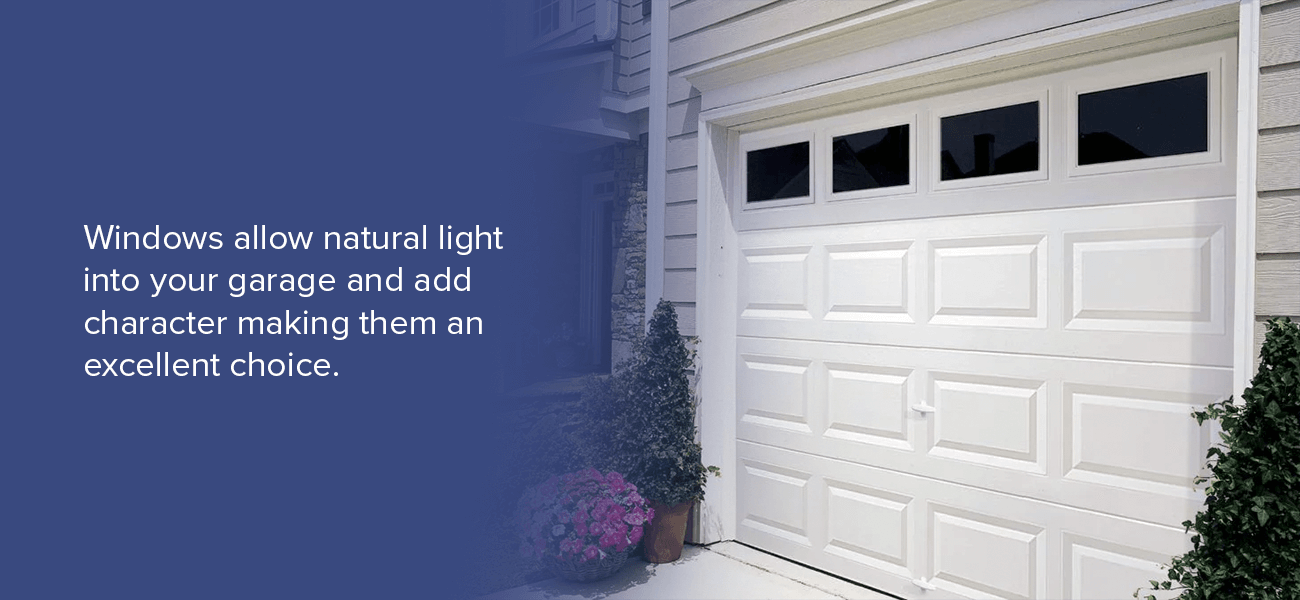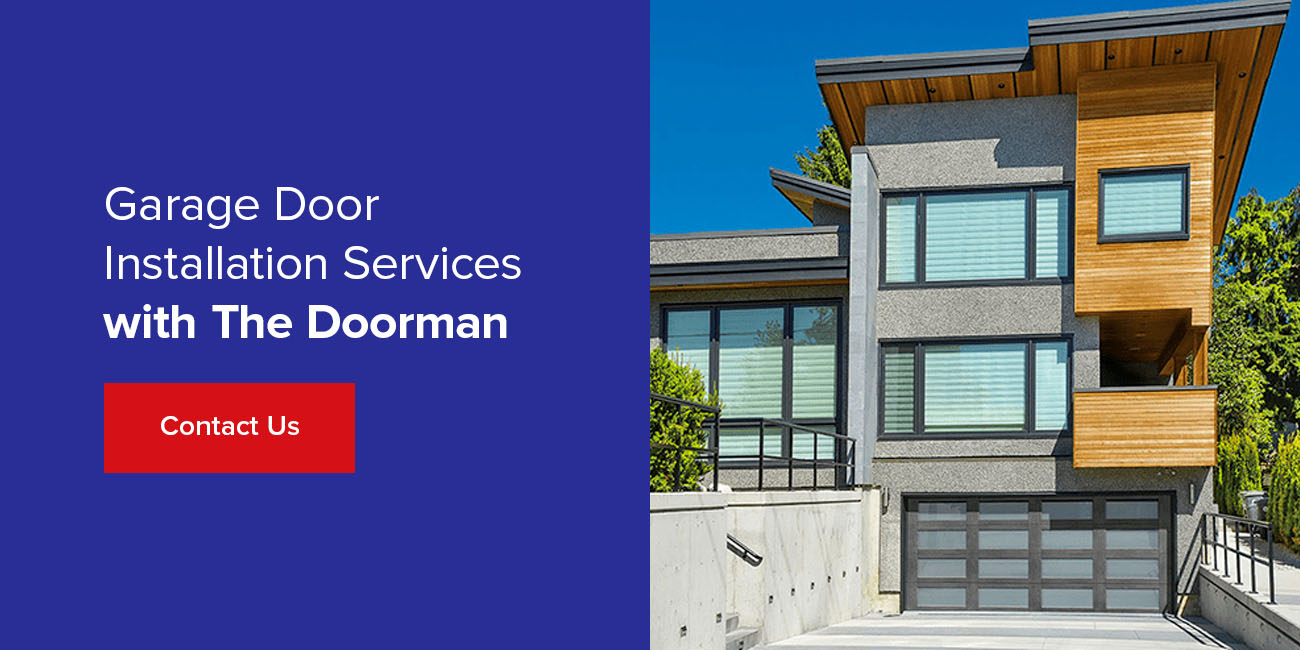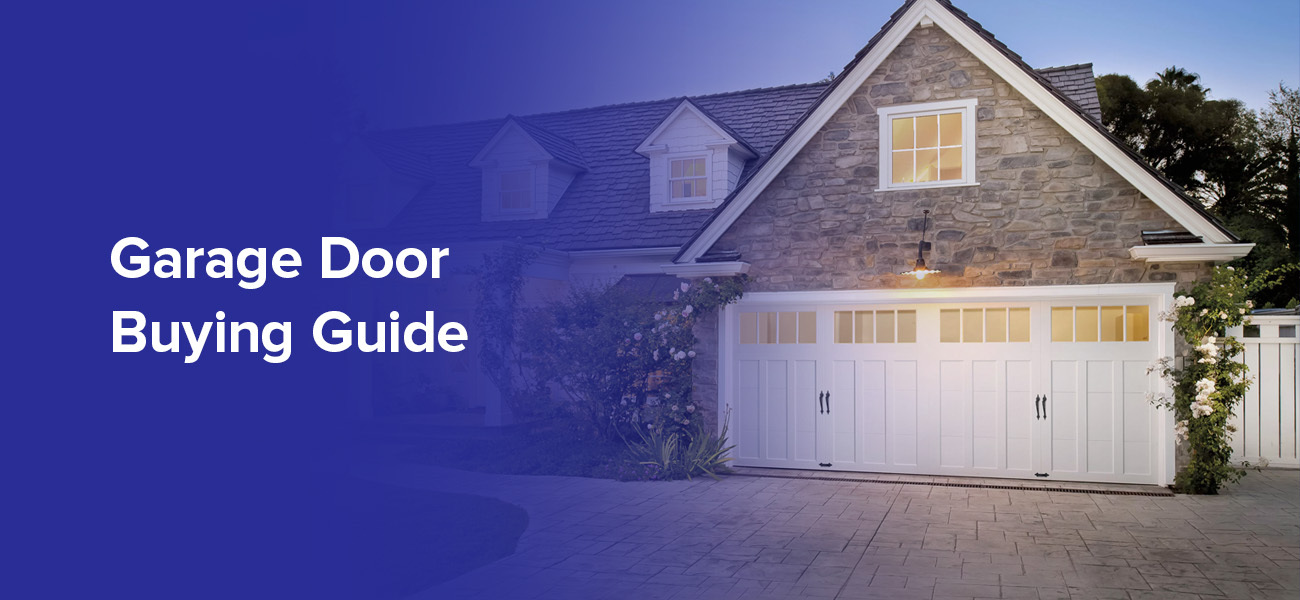
Your garage door is one of the most noticeable parts of your home’s exterior. Thus, it significantly impacts your home’s curb appeal and security. Purchasing or replacing a garage door requires careful thinking and planning. If you are looking for garage door buying guidance, read this guide for our expert tips.
Why Replace Your Garage Door
Installing a high-quality and modern garage door offers many benefits for your home. A new garage door adds value to your property and improves home security, energy efficiency and curb appeal. Most newer garage doors come with added features that allow you to access, monitor and control your home with your smart devices.
Instead of relying on a few remote controls, you can conveniently open and close your garage with a mobile phone, tablet or laptop anywhere in the world — all you need is an internet connection. If your children left their keys inside, you can let them in without driving home to grant them access. Similarly, you can open the door for couriers to safely place packages in your garage and close it when they leave while monitoring the activity on your smartphone.
Altogether, replacing your garage door with a new model when it no longer works can help you increase your home’s security and create a more convenient experience for you and your family.
When Is the Best Time to Buy Garage Doors?
In some ways, the best time to buy garage doors depends on where you live. If you live in a tropical region like Florida, replacing your garage door before hurricane season prepares your home for tropical storms. As hurricane season runs from June 1 to November 30, spring is optimal for installing a new garage door. If it is a mild winter, you can replace your garage door during those months.
What to Look for When Buying a New Garage Door
Here are the vital factors to consider when buying a new garage door:
1. Security
As the largest entrance to your home, a secure garage door protects your loved ones and belongings from danger or theft. New garage doors have advanced security options through smartphone compatibility. You can open and close the door using an app connecting to your garage door or check its status anywhere.
2. Function
Although the traditional purpose for garages is vehicle storage, many homeowners have alternative intentions for their garage space. Some of these uses include:
- Children’s play area
- Art studio
- Laundry room
- Workshop
- Entertainment area
Determining your garage space function will influence what kind of garage door might suit your needs best. For example, vehicle storage spaces or laundry rooms may require less insulation. In contrast, insulation is necessary for art studios, entertainment areas or any purpose involving extended time spent in the garage. Likewise, a children’s play area will need advanced safety features.
3. Insulation
Insulation has emerged as a crucial addition to garage doors. Insulation can increase energy efficiency in both harsh and moderate climates. The insulation traps heat inside the garage in harsher climates and keeps cool air inside during tropical climates. This helps you decrease your air conditioning reliance.
There are generally three options for garage door insulation — single-layer, double-layer and triple-layer.
4. Hurricane Protection
If you live in a South Atlantic state, hurricane protection is necessary. Wind-resistant garage doors are pressure-rated to withstand high winds and flying debris during hurricanes, tornadoes and other storms. Find your area’s recommended garage door pressure rating and install a door that meets that standard.
How to Choose the Right Garage Door
Besides noting what to look for when buying of garage door, you may also wonder what type of garage door you should buy. Here are six garage door buying tips to consider when purchasing a new garage door for your home.
1. Budget
Garage door costs vary according to several factors, including:
- Material
- Insulation rating
- Style
- Hardware
- Number of doors
- Size
As you try to find a garage door within your budget, consider which variables are most important. Weigh the aesthetic against practical considerations, like insulation and durability.
2. Material
The material you choose for your garage door influences aesthetic, maintenance and durability. The primary materials for garage doors include:
- Aluminum and glass: Aluminum and glass doors have simple architectural lines, providing a modern aesthetic with plenty of natural light. They are also lightweight, durable, energy-efficient, resistant to corrosion, require less maintenance and have strong insulators.
- Steel: Steel is cost-effective, durable and easy to maintain. Steel garage doors can withstand any climate and resist warping or cracking from moisture. They also provide a modern aesthetic with many customization options.
- Wood: Wooden garage doors provide a natural aesthetic and endless customization options. They are durable against impact, have high inherent R-values for insulation and are eco-friendly. With proper preventive measures, a wooden garage door can last decades.
- Composite: Composite garage door material consists of recycled wood and plastic fibers. This material is more affordable and lightweight than wooden garage doors. Composite garage doors mimic wooden garage doors’ natural aesthetic and have higher resistance to mold and rots.
3. Style
When choosing a garage door style, ensure the garage door complements the rest of your home’s exterior. The main style categories for garage doors include:
- Carriage house
- Contemporary
- Flush
- Long-raised
- Short-raised
4. Finish or Color
The garage door finish and color can add a personal touch to your door and increases curb appeal. You can apply a wood-grain finish to a steel door, opt for a neutral shade or choose a solid hue rich in color, like burgundy or dark green. The finish you choose could also depend on the door’s material. For example, if you select a wooden door, you may need a weather-resistant finish to protect the wood against excess moisture.
There are other essential things to consider with finish or color:
- The color and finish should blend well with the rest of your home’s color and exterior style.
- Neutral colors like black, gray, tan, brown or white blend well with almost any exterior style, so they are often safe.
- Darker shades tend to fade faster in direct sunlight. You may opt for a lighter shade if your garage door receives plenty of sunlight.
5. Windows
Windows allow natural light into your garage and add character making them an excellent choice. There are many options to choose from, including:
- A row of square windows
- Arched or cathedral-style windows
- Glass grid windows
- Rectangular columns
You can also find impact-resistant glass if you live in high-wind areas or obstructive glaze to maintain privacy while letting in natural light.
6. Size
To determine the garage door size you need, make a few measurements on your existing garage door. These measurements include the rough opening, left and right side room, headroom and backroom. Once you have these measurements, take them to your garage door dealer and they will help you find the right garage door size.
Where to Buy a New Garage Door
Choosing a garage door is crucial, so it helps if you partner with a trusted vendor. The Doorman of Southeast Florida has a wide range of residential garage doors to choose from, including doors impact-rated to withstand the annual hurricane season.
We only provide top-quality garage door installation and repair services at The Doorman of Southeast Florida. Contact us today for a free quote or schedule your $39.95 garage door tune-up!

